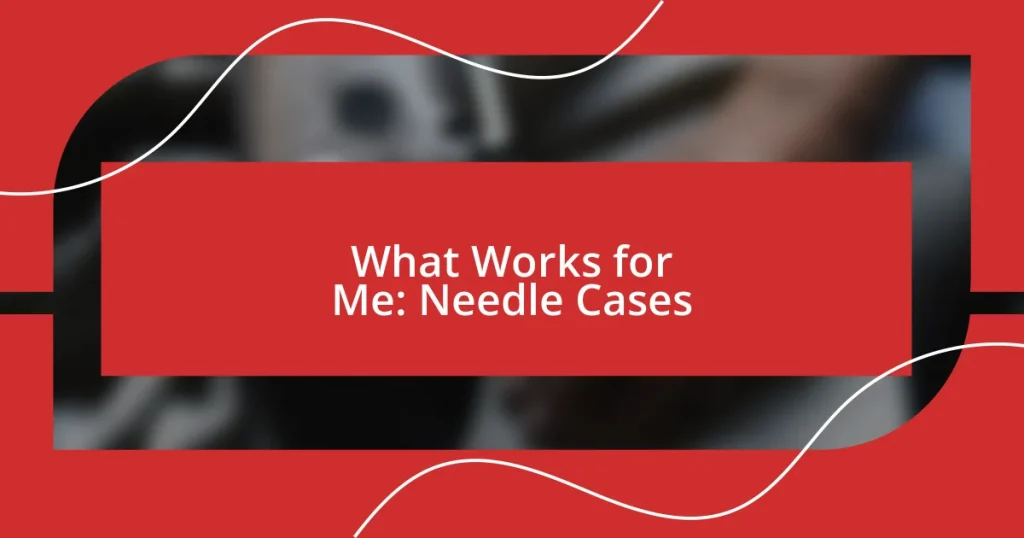Key takeaways:
- Effective communication and role assignment are crucial for enhancing group dynamics and productivity.
- Utilizing conflict resolution techniques, such as mediation and the “two-minute rule,” can transform disputes into productive discussions.
- Evaluating group performance through reflection and self-assessment fosters growth and improves future collaboration.

Understanding Group Project Dynamics
Understanding group project dynamics is all about recognizing the diverse personalities and skills each member brings to the table. I remember a project in college where we had a mix of extroverts and introverts. The extroverts dominated the discussions at first, but once we found a balance and encouraged quieter members to share their ideas, the creativity of the group soared. Isn’t it fascinating how different energy levels can shape a project’s outcome?
Communication inevitably plays a pivotal role in these dynamics. I’ve noticed that when team members maintain open channels—whether through regular check-ins or informal chats—it creates a more welcoming environment. What if one member feels overwhelmed or misunderstood? In those moments, fostering an atmosphere where everyone feels safe to express concerns can transform potential conflicts into collaboration.
Another crucial aspect is role allocation. Early in my career, I saw how assigning specific roles based on individual strengths led to a smoother workflow. Some team members shine when they can take the lead, while others excel in supportive roles. I often ask myself, how can we leverage each member’s strengths for the project’s success? This awareness can make all the difference in achieving shared goals.

Effective Communication Strategies
Effective communication is like the glue that holds a team together. I can vividly remember a particularly challenging group project where miscommunication led to confusion about deadlines. To remedy this, we started using a shared digital calendar that everyone could access. By having a centralized place for updates, team members felt more informed and engaged, which reduced misunderstandings.
To ensure effective communication in group projects, consider these strategies:
- Establish Clear Channels: Use tools like Slack or Microsoft Teams to keep conversations organized.
- Set Regular Check-Ins: Schedule brief meetings to discuss progress and address any concerns.
- Encourage Active Listening: It’s essential to make everyone feel heard. I often remind my team to repeat back what they’ve understood to confirm clarity.
- Be Open to Feedback: Creating a culture of constructive criticism can enhance collaboration.
- Share Celebrations: Recognizing team wins, no matter how small, boosts morale and fosters a positive atmosphere.
By integrating these techniques, teams can communicate more effectively and, ultimately, achieve better results.

Role Assignment and Responsibilities
I’ve found that assigning roles in group projects is essential to harnessing everyone’s potential. For instance, I participated in a project where we divided tasks based on each person’s unique skill set. One member was a whiz at design, while another had a knack for research. By identifying and appreciating these talents, we not only boosted our productivity but also heightened team morale. It’s amazing how clear responsibilities can lighten the workload and guide the team toward a common goal.
Responsibility assignment also shields teams from the dreaded blame game. I recall working with a team where one person didn’t clarify their role, leading to missed deadlines. Once we established boundaries and defined accountability, everyone felt a sense of ownership which transformed our dynamics. The realization that we were all in it together made the process more gratifying. Have you ever felt the relief of knowing exactly what you’re supposed to do? It’s a game-changer in any project.
In my experience, flexibility within assigned roles can also yield surprising results. During another project, I noticed that a team member flourished when they switched from their traditional supportive role to take the lead on a presentation. The shift ignited their passion and highlighted skills we hadn’t fully tapped into before. It made me reflect: how often do we box ourselves and others into fixed roles? Recognizing potential and being open to adjustments fosters innovation and helps the team grow.
| Role | Responsibilities |
|---|---|
| Leader | Coordinates the team, sets deadlines, and ensures progress. |
| Researcher | Gathers information and supplies necessary data for decision-making. |
| Designer | Creates visuals and layouts, enhancing the project’s presentation. |
| Organizer | Keeps the project on track with timelines and facilitates communication. |

Conflict Resolution Techniques
Conflict is almost a rite of passage in group projects; I’ve navigated my fair share of it. One incident stands out: during a collaborative project, two members clashed over differing approaches. Instead of letting the tension fester, we implemented a technique called “interest-based relational approach.” This method focuses on the underlying needs and interests of each party rather than their positions. By facilitating a candid discussion, we uncovered common ground and turned a heated moment into a bonding experience.
I’ve often found that mediation can be a powerful tool in conflict resolution. I remember when our team faced a disagreement over the project direction, which resulted in raised voices. We decided to take a step back and involve a neutral facilitator—our advisor. This neutral ground allowed all voices to be heard without escalating the situation. Having someone guide the conversation brought clarity and helped us reach a resolution faster than if we had continued in our emotionally charged states. Hasn’t it been true that sometimes, a little distance can provide the perspective we desperately need?
Another technique I’ve found effective is the “two-minute rule” in conflict conversations. It’s simple: each party gets two uninterrupted minutes to express their thoughts. I remember using this during a debate about resource allocation. When we applied the rule, emotions cooled, and insights emerged. It was astonishing how this simple structure allowed for empathy and understanding; we realized how much we all valued each other’s input. This technique taught me that sometimes, giving space is just as important as diving into the issue. Have you ever felt that just listening could unlock a door to resolution? It truly works wonders.

Time Management Best Practices
Time is often the most elusive element in group projects, and I’ve learned that setting clear deadlines can make all the difference. Early in my experience, I worked on a project where we overlooked this crucial step, thinking everything would fall into place naturally. It was a disaster! Once we started using a shared calendar with set milestones, the stress diminished. I felt like we were finally in control rather than chasing the clock. Have you ever noticed how a simple timeline can transform a chaotic project into a more structured endeavor?
Another effective practice I’ve embraced is breaking tasks into smaller, manageable chunks. I recall a major project that felt overwhelming at first glance. However, by dividing it into weekly goals, each meeting became a celebration of our achievements rather than a reflection of what still needed to be done. This method not only made progress tangible but also kept morale high. I’ve come to appreciate how celebrating small wins can motivate the entire team. Isn’t it refreshing to focus on what you’ve accomplished, rather than what’s still left?
I also find that regular check-ins are essential for time management. In one group, we instituted brief daily stand-ups to gauge everyone’s progress and issues. This practice kept everyone accountable and fostered open communication. Ultimately, it created a sense of camaraderie that enhanced our collaboration. Reflecting on that experience, I realized how vital connection and consistency are in keeping projects on track. Have you ever experienced the relief of knowing that everyone is aligned and moving forward together? It truly makes a world of difference.

Evaluating Group Performance
Evaluating group performance is often about more than just outcomes; it involves reflection on the process and dynamics. I remember a project that left us all scratching our heads at the end. We achieved our goals, yet I felt we hadn’t truly functioned as a cohesive unit. Conducting a post-mortem discussion revealed underlying tensions and miscommunications that had clouded our collaboration. Have you ever realized that sometimes, the real work happens after the project ends?
One technique I use is to encourage self-assessment among team members. In one group, I proposed we rate our contributions and the group’s overall performance anonymously. The results were revealing and sparked conversations about accountability and the different perspectives we each had on our teamwork. This experience taught me that sometimes, honest feedback can be the catalyst for growth we desperately need. Have you felt the weight lifted when you acknowledge where things could improve?
Observing group dynamics during the project can also offer valuable insights. I remember closely watching how my teammates interacted, noting who took the lead, who was quiet, and how conflicts were handled. Those observations helped me identify patterns that often went unnoticed. When we discussed these dynamics, it opened a treasure trove of awareness about our strengths and weaknesses. Isn’t it fascinating how understanding our interactions can lead to a more fruitful collaboration in the future?

Lessons Learned from Group Collaboration
Collaborating in groups often leads to unexpected lessons that go beyond the project itself. I once participated in a team where personalities clashed fiercely. Initially, it felt chaotic, but as we navigated those differences and learned to truly listen to each other, a magical transformation occurred. I realized that embracing diverse perspectives not only enriched our outcomes but also deepened our understanding of one another. Isn’t it incredible how conflict can sometimes pave the way for camaraderie?
Another key lesson for me has been the importance of role clarity. In one memorable project, we all jumped into tasks without explicitly defining our roles. It was a scramble! After that experience, we began assigning specific responsibilities right from the start, which made such a difference. I noticed that knowing who was responsible for what helped eliminate overlap and confusion. Have you ever felt the relief of having a clear roadmap to follow instead of wandering aimlessly?
Lastly, I’ve learned that vulnerability can foster strong bonds within a team. During one project, I openly shared my struggles with a particular aspect, expecting hesitation from my peers. To my surprise, several of them followed suit, ultimately creating a safe space for honest discussions and support. The shift not only strengthened our collaboration but also allowed us to tackle challenges more effectively. It begs the question: wouldn’t you agree that a little vulnerability can lead to monumental breakthroughs in teamwork?















